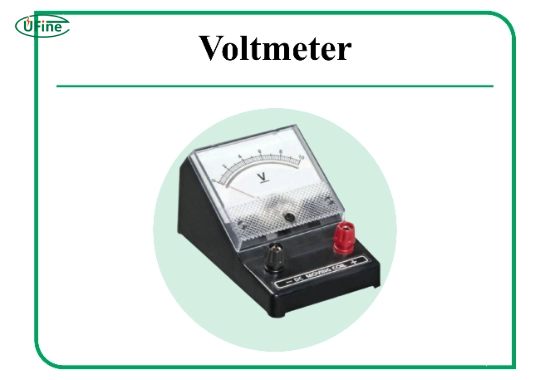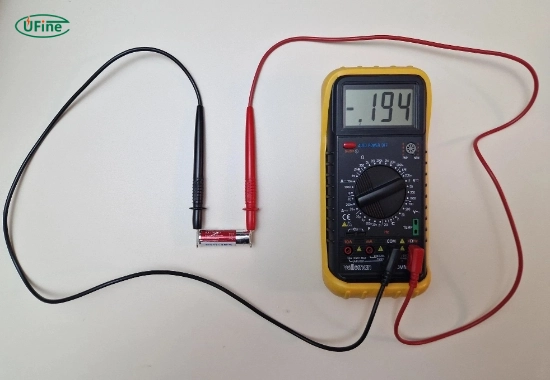Testing AA batteries with a voltmeter is a simple yet essential skill that can save you time and money. Whether you’re troubleshooting a remote control that isn’t working or checking if your batteries are still good to use, a voltmeter accurately assesses their condition. But how do you test AA batteries with a voltmeter correctly? In this guide, we’ll walk you through everything you need to know to test AA batteries, even if you’re a beginner.
Part 1. What is a voltmeter?
A voltmeter is an electronic device used to measure the voltage of a power source. It can determine how much electrical potential exists between two points in a circuit. In the case of AA batteries, a voltmeter will tell you the remaining charge or how much power the battery has left.
Voltmeters come in two main types:
- Analog Voltmeters: These use a needle to display voltage levels.
- Digital Voltmeters: These are more precise and display readings on an LCD screen.
A digital voltmeter is preferred for most household tasks, such as testing AA batteries because it is user-friendly and provides accurate readings.
Part 2. Why test AA batteries with a voltmeter?
Why not just replace the batteries when they stop working? While that’s an option, testing them first has several advantages:
- Saves Money: Not all batteries that appear “dead” are completely drained. Some may still have enough charge for low-energy devices.
- Eco-Friendly: Testing batteries prevents unnecessary disposal, reducing waste.
- Accurate Diagnosis: A voltmeter helps you confirm whether the battery is the issue or if the device is malfunctioning.
Using a voltmeter lets you decide whether to keep, recharge (for rechargeable batteries), or dispose of your AA batteries.
Part 3. What tools do you need to test AA batteries with a voltmeter?
To successfully test AA batteries, you’ll need the following:
- A Digital or Analog Voltmeter: Digital is recommended for beginners.
- AA Batteries: These can be alkaline, lithium, or rechargeable NiMH batteries.
- A Clean Workspace: Ensure the testing area is free from clutter and moisture.
Once these tools are ready, you’re all set to begin testing.
Part 4. How to test AA batteries with a voltmeter?
Testing AA batteries with a voltmeter is straightforward. Follow these steps:
Step 1: Turn on the voltmeter
- Set your voltmeter to measure DC voltage. Most AA batteries operate between 1.2 and 1.5 volts, so choose the appropriate setting (e.g., 2V or 20V DC) on your voltmeter.
Step 2: Identify the battery terminals
AA batteries have two terminals:
- Positive terminal (+): Usually marked with a plus sign (+) and located on the smaller, raised end.
- Negative terminal (-): The flat end of the battery.
Step 3: Connect the voltmeter probes
- Touch the red probe to the battery’s positive terminal (+).
- Touch the black probe to the battery’s negative terminal (-).
Step 4: Read the voltage
Look at the voltmeter display to check the reading. Here’s how to interpret the results:
- 1.5V or higher: The battery is fully charged.
- 1.3V to 1.5V: The battery is partially discharged but still usable.
- Below 1.2V: The battery is weak and may not power devices effectively.
- 0V: The battery is entirely dead or faulty.
What Is the Weigh of an AA Battery?
Part 5. How to test rechargeable AA batteries?
Rechargeable AA batteries, such as NiMH or NiCd, operate slightly differently from alkaline batteries. Here’s how to test them with a voltmeter:
1. Set the voltmeter to DC voltage, similar to the process for alkaline batteries.
2. Connect the voltmeter probes to the battery terminals.
3. Check the voltage reading:
- 1.2V or higher: The battery is charged.
- Below 1.2V: The battery may need recharging.
- 0V: The battery could be damaged or no longer usable.
Part 6. Common mistakes to avoid when testing AA batteries
Testing batteries might seem simple, but there are a few pitfalls to watch out for:
- Incorrect Voltage Setting: Always set the voltmeter to DC voltage within the correct range (e.g., 2V or 20V).
- Reversing the Probes: Connecting the red probe to the negative terminal or the black probe to the positive terminal will result in a negative reading.
- Testing Old Batteries in Series: When testing multiple batteries in a device, always test them individually for accurate results.
- Using a Damaged Voltmeter: A faulty voltmeter may provide inaccurate readings. Double-check your equipment before use.
Part 7. How to interpret voltmeter readings for different battery types?
Different types of AA batteries have slightly varied voltage ranges. Here’s a quick guide:
- Alkaline AA Batteries: Typically 1.5V when new. Replace when below 1.2V.
- Lithium AA Batteries: Start at 1.6V and remain effective until around 1.3V.
- Rechargeable AA Batteries (NiMH or NiCd): Fully charged at 1.2V. Replace or recharge when below 1.0V.
Part 8. When should you replace AA batteries?
Knowing when to replace AA batteries depends on their voltage readings and their performance in your devices. Replace batteries if:
- The voltage is consistently below the recommended level for your device.
- Your device still needs to be fixed after testing multiple good batteries.
- The battery leaks or shows signs of corrosion.
Part 9. How to dispose of dead AA batteries responsibly?
It would help to never throw dead AA batteries in the trash because of their environmental impact. Instead:
- Recycle: Take them to a local recycling center or drop-off point for batteries.
- Use a Battery Recycling Program: Many stores and organizations offer recycling services for used batteries.
- Avoid Storing Dead Batteries: Dispose of them promptly to prevent leaks or corrosion.
Part 10. FAQs
-
Can I use a multimeter instead of a voltmeter?
Yes, a multimeter can measure voltage just like a voltmeter. Please set it to the DC voltage setting and follow the same process. -
What should I do if my battery shows 0 volts?
A reading of 0 volts usually means the battery is entirely dead or damaged. Dispose of it responsibly. -
Why is my rechargeable battery reading low even after charging?
This could indicate that the battery has reached the end of its lifespan and can no longer effectively hold a charge. -
How often should I test my AA batteries?
Test batteries whenever a device stops functioning or before storing them for long periods. This ensures you only keep functional batteries. -
Can I test batteries without a voltmeter?
Yes, but the methods (such as the drop test) must be more accurate. A voltmeter is the most reliable tool and provides precise readings.
Related Tags:
More Articles

How to Choose the Best Floor Scrubber Battery for Commercial Cleaning?
Selecting the ideal floor scrubber battery ensures a long runtime, rapid charging, and minimal maintenance for efficient commercial cleaning operations.
Battery for Blower vs Battery for Leaf Vacuum: Which One Should You Choose?
Battery for blower vs leaf vacuum—learn the key differences in power, fit, and runtime to choose the right battery for your outdoor tool needs.
How to Choose the Right Battery for Blower?
Choosing the right blower battery? Consider voltage, capacity, chemistry & usage. This guide helps match the best battery for peak performance.
How to Choose the Best Insulated Battery Box for Lithium Batteries?
Choosing the Best Insulated Battery Box for Lithium Batteries? Discover key factors such as size, material, and safety for optimal protection and performance.
7 Critical Elements on a Lithium Battery Shipping Label
What must be on a lithium battery shipping label? Learn 7 key elements to ensure safety, legal compliance, and correct handling across all transport modes.






